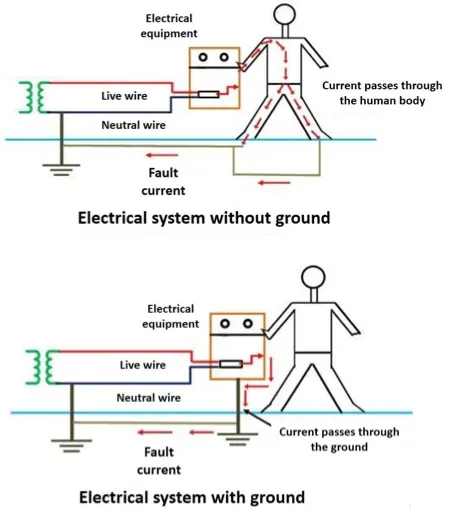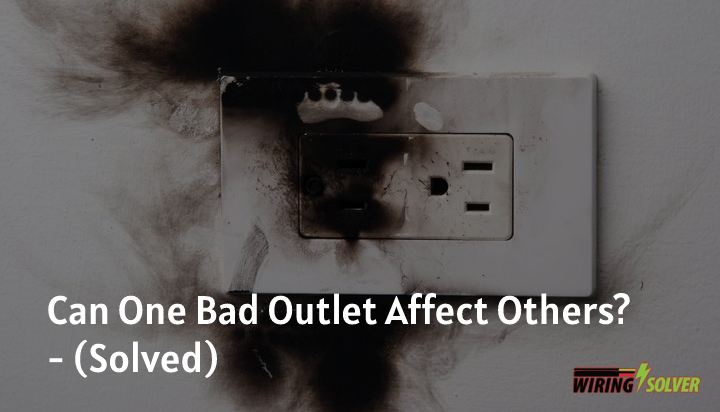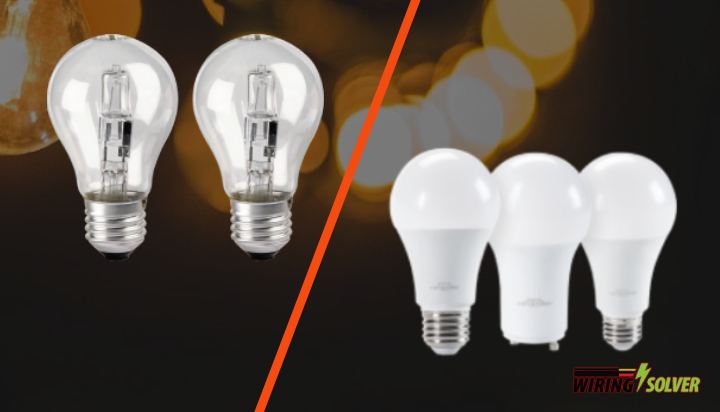A proper grounding circuit is an essential part of any electrical system. Without a proper grounding circuit, any electrical system may malfunction in a dangerous manner and lead to serious accidents.
But what to do with ground wire if no ground? Is it OK not to connect the ground wire?
It is entirely possible for an electrical device to not use the ground. Especially for low-power devices, such as routers, mobile phone chargers, small lamps, and so on. In such a case, the ground wire should be taped off and left alone.
In this article, I will be talking about the importance of grounding, cases where it is a must and cases where you may leave it out, and so much more. So, without further ado, let’s dive in.
What Is Electrical Grounding?
In electrical engineering, ground or earth is a reference point in an electrical circuit from which voltages are measured, a common return path for electric current, or a direct physical connection to the Earth. That is where the term “ground” or “grounding” comes from.

Let’s take a quick look at the diagram above (Fig-1). In an electrical system without proper grounding, all electricity will pass through the human body, using it as a conductor, as human bodies tend to be conductive. Which can be fatal for a person and prove highly dangerous and life-threatening.
However, in a system with proper grousing, even if a malfunction occurs in the circuit, the person is safe, as the electricity has a better path with a higher conductivity through the grounding. Thus saving the person from being electrocuted.
Let’s take a quick look at the benefits of electrical grounding.
Benefits of Proper Grounding:
- Eliminates the risk of electrocution.
- Provides protection for electrical equipment.
- Helps to prevent electrical fires to a certain extent.
- Helps reduce electrical noise.
- Helps to stabilize the voltage levels.
Now that I have established the necessity and benefits of grounding, you definitely would want to ground everything. But what to do with ground wire if no ground?
What to Do with Ground Wire If No Ground?
There are several devices and electrical equipment that might not require the use of a ground wire. In those cases, you can leave them unconnected, but you must follow a few steps first.
How to Deal with a Ground Wire if there is no Ground:
Use Wire Connectors:

- Gather twist-on wire connectors (Fig 2) or any other variety you may find. They tend to be pretty cheap. You can get a pack of 100 for just around $8 to $10.
- Put them on the edge of the ground wire. Simply twist them on.
- Coil up the ground wire.
- You may use a string or electrical tape to keep it coiled up.
- Place it back inside the electrical junction box.
This is a crucial procedure because if you do not make sure to cover the bare wires of the ground wire, it can easily touch a live wire and create a short circuit and prevent power from being supplied to your outlets and fixtures.
Never Cut the Ground Wire Off:
Make sure to never cut the ground wire off. When you don’t have a ground, having the line side on a gfci plug and then the rest of the circuit on the load side gives you adequate fault protection for the circuit.
Simply covering the ground wire with a wire connector or electrical tape, and then tucking it back inside the junction is enough for such a case.
FAQs Regarding Electrical Grounding
There are several questions that might arise in one’s mind regarding electrical grounding, given how crucial it is for the safety of a household. I will provide answers to some of the most commonly asked questions regarding this issue.
Q. Is it OK to install a light fixture without a ground wire?
A. Now this is a pretty common question and requires user attention to assess the situation properly. What is the light fixture attached to or connected to? Is the material conductive or non-conductive?
If the material is something like plastic, rubber, or ceramic, and thus is non-conductive, it will not require any grounding. But however, if the light fixture is attached to, say a metal pole. In such a case proper grounding is a must for the light fixture. The same could be said for wiring a doorbell transformer.
Q. Where to connect the ground wire for the light fixture?
A. Locate the ground wire coming from your home’s electrical box where the light fixture is to be installed. Make a “screw loop” on the tip of the wire by gripping the very tip of the wire with your needle nose pliers and twisting the pliers to form a hook on the tip of the wire in the shape of a letter “J”.
If your light fixture has its own green ground wire you will need to connect the two ground wires using a wire nut. To use the wire nut simply insert the tips of both wires and turn the wire nut in a clockwise direction until tight.
Q. What happens if an electrical outlet is not grounded?
A. Electrical fire is more likely when outlets are not grounded. Errors with the outlet may result in arcing, sparking, and electrical charge without the ground, which can start a fire.
The likelihood of an electrical fire, health risks (risk of shock), and property damage are all significantly increased by an ungrounded outlet, making it extremely risky. It is significant to remember that electrocution can result in death with just 80 milliamps.
Summary
So, if you were wondering about what to do with ground wire if no ground, I hope this article has been able to answer your question. I hope that now you are more knowledgeable about grounding and its benefits.
As well as the cases where it is a must. However, if you feel confused regarding any electrical issue, do not hesitate to consult a professional. As electricity is a delicate matter that can turn dangerous pretty easily.

![Double Light Switch Not Working!! [Solved]](https://wiringsolver.com/wp-content/uploads/2022/08/Fix-Double-Light-Switch-Not-Working.jpeg)
![How To Remove Plastic Ceiling Light Cover? [3 Methods]](https://wiringsolver.com/wp-content/uploads/2021/09/How-To-Remove-Plastic-Ceiling-Light-Cover.webp)
![GFCI Outlet RESET Button Won’t Stay In When Pushed [Solved]](https://wiringsolver.com/wp-content/uploads/2023/02/GFCI-Outlet-RESET-Button-Wont-Stay-In-When-Pushed.jpeg)


